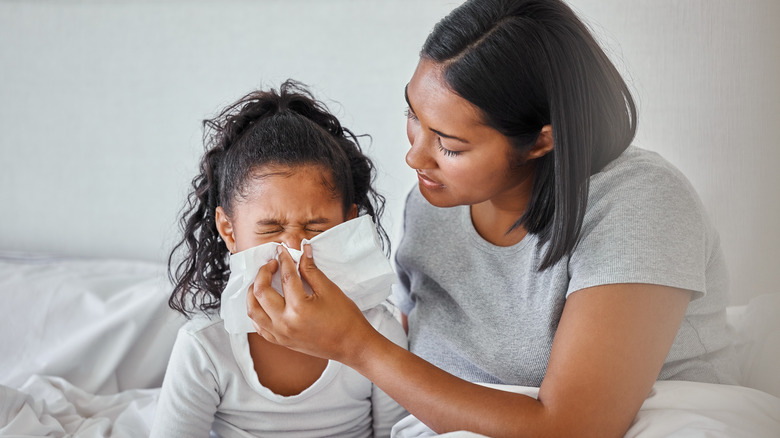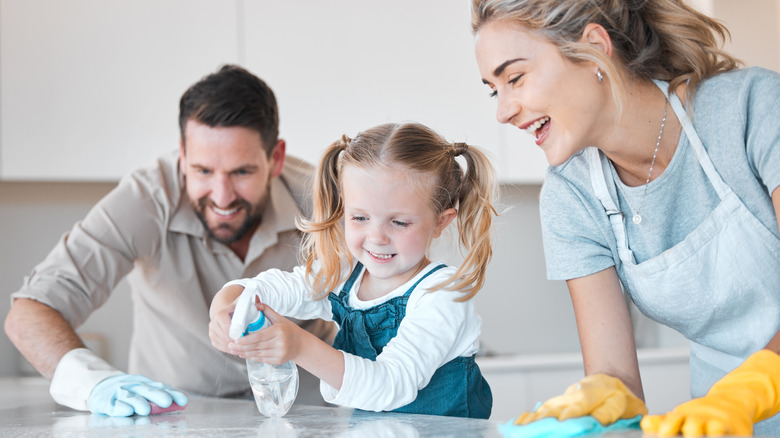How To Keep Your Household Healthy When One Family Member Gets Sick
The cold and flu season can be rough year to year, but with the current circulation of COVID-19, the flu, and RSV across the country, the chances of respiratory infections this holiday season are particularly high. In an exclusive interview with Health Digest, Dr. Saskia Popescu, an infectious disease epidemiologist and assistant professor at George Mason University and Clorox spokesperson, shares her top tips for how to keep the rest of your household safe and healthy this winter if a family member happens to get sick.
"When someone is sick, the first thing parents should do is have the person who is sick isolate, as this is key when it comes to helping prevent the spread of germs," Dr. Popescu states. "Help them isolate by ensuring they have a space, such as their own room, to rest away from others," she suggests. Dr. Popescu notes that this is especially important when it comes to eating. "If your sick family member is old enough, you can also have them eat in their room or a separate space as needed," she says. To limit close contact with other family members, she encourages loved ones to bring food and water to the person who is sick, rather than having them leave the room to get it themselves. "When dining together, sitting outside or near a window is best so you have air ventilation," she offers alternatively.
Masking, handwashing, and cleaning contaminated surfaces
The next tip for families is to have any sick person in the household wear a mask when around others, Dr. Popescu tells Health Digest. However, isolation and masking aren't the only preventative measures families should take. "In addition to these measures, continued hand hygiene, good ventilation, and regular cleaning and disinfecting of shared areas and high-touch surfaces with effective product solutions are also very important in helping prevent the spread of illness-causing germs," she explains. "Seasonal respiratory viruses, like RSV and flu, spread more easily (compared to COVID-19) through contaminated objects, surfaces, and hands, which means continuing proper hand hygiene as well as cleaning and disinfecting high-touch areas is especially key."
Dr. Popescu explains that the most common ways in which germs are spread throughout the household are from breathing in contaminated droplets in the air and through contact with contaminated surfaces, particularly if the individual then touches their nose, eyes, or mouth. For this reason, she explains that it's important to sanitize hard surfaces and frequently-touched objects such as utensils, light switches, door knobs, fridge handles, television remotes, and more. "Household contacts present the highest risk for spread due to continued close contact, so trying to break the chain of infection through the measures I've noted is key," Dr. Popescu concludes.
To learn more about Dr. Popescu, you can connect with her on Twitter.


